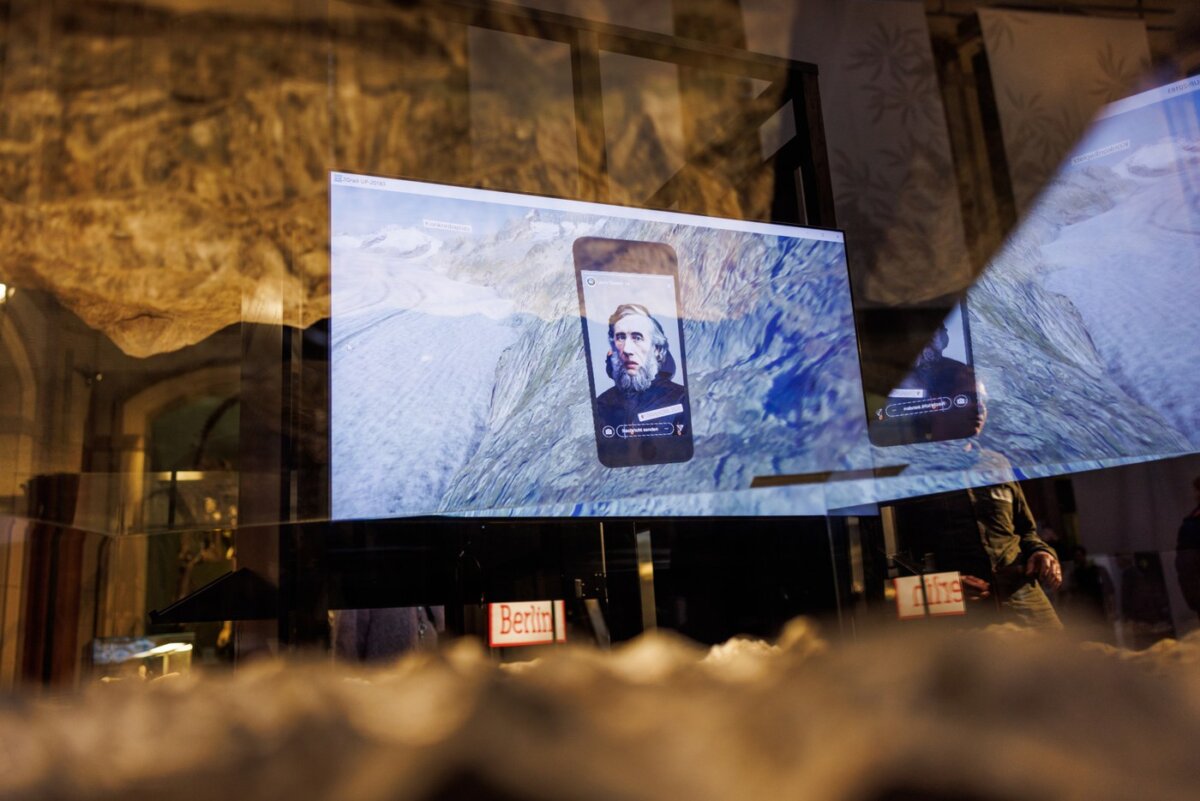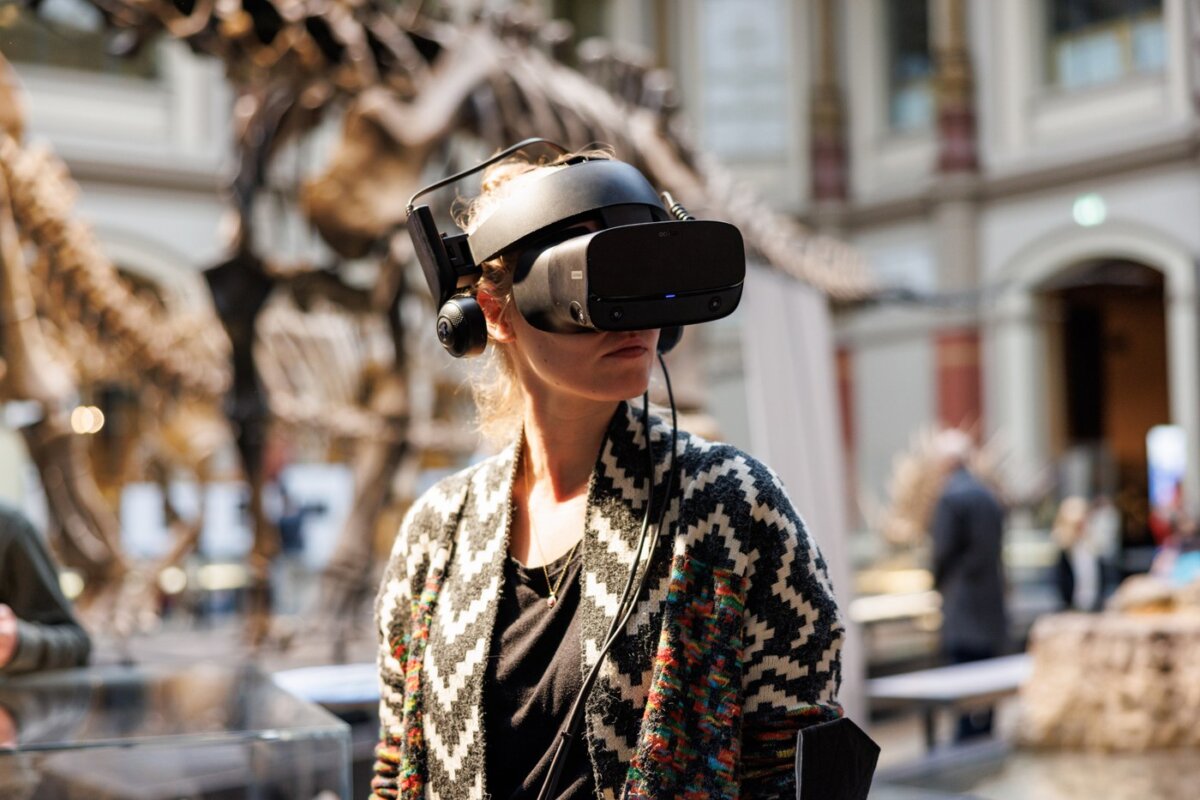A 200-year-old relief of the Alps meets an interactive virtual reality installation. During the Berlin Science Week, the historical Aletsch model from the Humboldt Forum and the VR project „Expedition 2 Grad“ from the Universities of Zurich and Fribourg and the Zurich University of the Arts were exhibited together for the first time. They impressively show the Great Aletsch Glacier – the largest glacier in the Alps – as a clinical thermometer of climate change. Following the Berlin Science Week, the installation will be on permanent display at the Humboldt Lab
The Great Aletsch Glacier in the Swiss canton of Valais covered an area of more than 100 square kilometres at the beginning of the 19th century. During this period, the relief builder, topographer and passionate mountaineer Joachim Eugen Müller created a relief model of the Swiss Alps from plaster and wood, measuring almost 5 by 2.5 metres. On the advice of Alexander von Humboldt, among others, the enthusiastic King Frederick William III of Prussia bought this model of the Alps and exhibited it as the main attraction in the Berlin Kunstkammer (Chamber of arts and curiosities) in the Berlin Palace. For the citizens of Berlin interested in science, the bird’s-eye view of the Alps was a sensation. After the Kunstkammer was dissolved, the trace of the model was initially lost. A section depicting the upper Rhone Valley with the Simplon Pass and the Aletsch Glacier slumbered unrecognised for a long time in the Geomorphological-Geological Collection of the Geographical Institute of Humboldt University in Berlin. It was only in 2017, when the art historian Eva Dolezel and the Swiss relief expert Oscar Wüest examined the model, that they discovered that it had in fact been part of the large Alpine relief in the Berlin Kunstkammer.
Since 2020, the Aletsch model is back in the reconstructed Berlin Palace. As part of the permanent exhibition “Flashbacks. History of the Site“, it is on permanent display in the Humboldt Lab and thus once again accessible to the general public. „The model shows us the materiality and mediality of science communication two hundred years ago, when the ‘sensualisation’ of knowledge was in high demand. At the same time, its topic is highly relevant today: “The temporally frozen state of the glaciers in the relief clearly shows the effects of climate change compared to today,” explains Johanna Stapelfeldt, curator for the Humboldt Lab.

